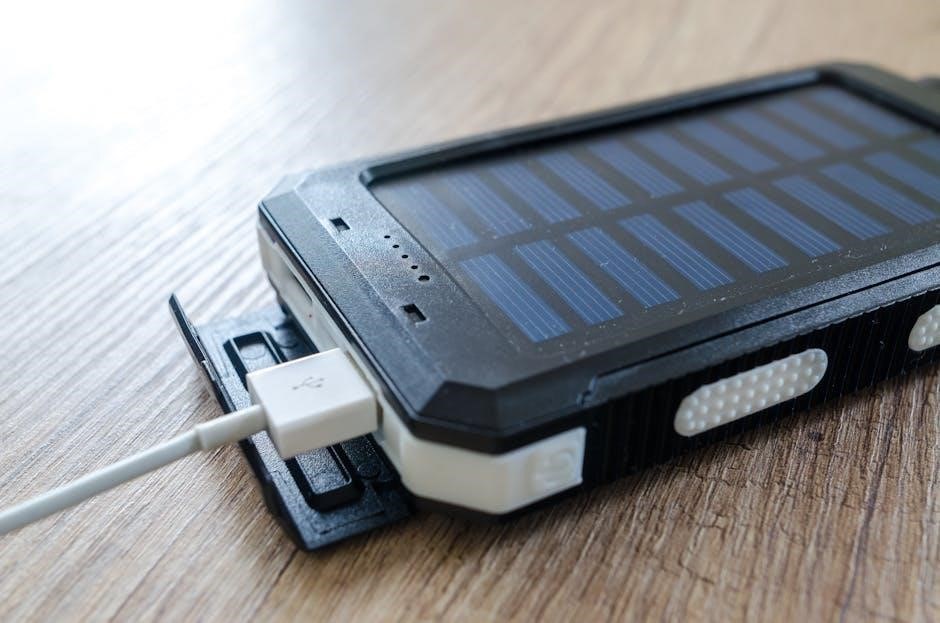Accu-Chek Guide Me Battery: A Comprehensive Guide
This guide provides detailed information about the Accu-Chek Guide Me meter’s battery. We will cover the battery type, replacement steps, troubleshooting, and safety measures. Proper battery maintenance ensures accurate blood glucose monitoring. This guide will help you keep your device running smoothly.
The Accu-Chek Guide Me blood glucose monitoring system is designed for easy and reliable blood glucose testing. A key component of its functionality is its power source: the battery. Understanding the battery requirements and maintenance is crucial for optimal performance. The Accu-Chek Guide Me meter requires regular battery checks and timely replacements to ensure accurate readings.
This section introduces you to the importance of the battery in the Accu-Chek Guide Me system. We will explore the role of the battery, its impact on the device’s functionality, and the significance of using the correct battery type. Ensuring that the battery is in good condition will assist you in maintaining the reliability and accuracy of the Accu-Chek Guide Me meter. It will also cover how to identify low battery warnings and how to handle related issues that can affect your blood glucose monitoring. Knowing these basics is essential for effective diabetes management.
Proper battery care is an integral part of using the Accu-Chek Guide Me meter.
Battery Type Used in Accu-Chek Guide Me
The Accu-Chek Guide Me meter relies on a specific type of battery to operate correctly. It uses a 3-volt lithium battery, specifically the CR2032 model. This coin-cell battery provides the necessary power for the meter to perform blood glucose tests accurately and efficiently. Using the correct battery type is crucial for maintaining the device’s functionality and ensuring reliable results.
The CR2032 battery is commonly available and can be purchased from most drugstores, supermarkets, and online retailers; It is essential to ensure that the replacement battery is fresh and has a sufficient charge to avoid any performance issues with the meter. Always check the expiration date on the battery packaging before installation.
Using an incorrect battery type can lead to damage to the meter or inaccurate readings. Therefore, it is vital to always use the recommended CR2032 battery. This battery type is designed to provide stable and consistent power, which is necessary for the precise measurements required in blood glucose monitoring. Make sure to handle the battery with care and follow the correct installation procedures.
How to Replace the Battery: Step-by-Step Guide
Replacing the battery in your Accu-Chek Guide Me meter is a straightforward process that ensures your device continues to function correctly. This step-by-step guide will walk you through each stage, from opening the battery door to inserting the new battery and ensuring it is properly secured. Always handle the meter and batteries with clean, dry hands to prevent any damage or contamination.
Before starting, make sure you have a new CR2032 battery readily available. It is recommended to have a small, narrow object, such as a pen or screwdriver, to help open the battery door, if needed. Ensure the meter is turned off before beginning the replacement process to prevent any accidental readings or data loss.
Carefully follow each step to avoid damaging the meter or the battery compartment. Once the new battery is installed, double-check that it is correctly positioned and the battery door is securely closed. After replacing the battery, it may be necessary to reactivate the meter by pressing and holding the OK button for a few seconds. This will ensure the meter recognizes the new power source and functions as expected. Regular battery replacement is essential for accurate and reliable blood glucose monitoring.
Opening the Battery Door
The first step in replacing the battery of your Accu-Chek Guide Me meter involves carefully opening the battery door. This door is designed with a child-resistant mechanism to prevent accidental opening. To begin, locate the battery door on the back of the meter.
You will notice a small tab or indentation, often marked with an arrow. To open the door, you’ll need to push this tab in the direction indicated by the arrow. While pushing the tab, gently lift the battery door upwards. If you encounter resistance, ensure you are pushing the tab firmly enough and in the correct direction.
If the battery door is particularly difficult to open, use a narrow object like a pen or small screwdriver to assist. Insert the tip of the object into the slot and gently push the tab while lifting the door. Be careful not to apply excessive force, as this could damage the door or the meter itself.
Once the tab is released, the battery door should open easily. Ensure the door is fully opened to provide clear access to the battery compartment; With the battery door now open, you can proceed to the next step of removing the old battery.
Removing the Old Battery
Once the battery door of your Accu-Chek Guide Me meter is open, the next step is to carefully remove the old battery. Before proceeding, ensure that the meter is turned off to prevent any accidental activation during the battery replacement process.
Inside the battery compartment, you will find the battery held in place by small tabs or a retaining mechanism. Gently push the hand button to release the old batteries, then slide them out. If there is no button, carefully slide them out. Note the orientation of the battery, specifically which side is facing up or down, as this will be important when inserting the new battery.
If the battery is difficult to remove, avoid using excessive force or sharp objects, as this could damage the battery compartment or the meter itself. Instead, try gently wiggling the battery or using a small, non-metallic tool to help dislodge it.
After removing the old battery, inspect the battery compartment for any signs of corrosion or damage. If you notice any corrosion, clean the contacts with a cotton swab dipped in isopropyl alcohol before inserting the new battery. This will ensure a good connection and optimal performance.
Proper disposal of the old battery is essential. Follow local regulations for battery disposal to protect the environment. With the old battery removed and the compartment inspected, you are now ready to install the new battery.

Inserting the New Battery
With the old battery successfully removed, you are now ready to insert the new CR2032 battery into your Accu-Chek Guide Me meter. Before you begin, make sure you have the correct type of replacement battery. Verify that the battery compartment is clean and free from any debris or corrosion.
Take the new battery and carefully observe the correct polarity. The plus sign (+) on the battery should be facing up when placed in each slot. Slide the new battery under the black tabs and the hand button.
Gently slide the battery into the compartment, ensuring it sits flush against the contacts. Avoid forcing the battery, as this could damage the meter or the battery itself. If you encounter resistance, double-check the polarity and alignment.
Once the battery is properly inserted, it should fit snugly in place. If the battery feels loose or does not make good contact, remove it and re-insert it, making sure it is correctly positioned. A secure connection is crucial for the meter to function correctly.
After inserting the new battery, take a moment to inspect the battery compartment again to ensure everything is in order. Once you are satisfied that the battery is correctly installed, you can proceed to close the battery door.
Closing the Battery Door
With the new battery securely in place within the Accu-Chek Guide Me meter, the next step is to close the battery door. This step is crucial to ensure the battery remains protected and the device functions correctly. Align the battery door with the opening on the back of the meter, making sure the tabs are properly positioned to engage with the slots.
Gently push the battery door down until it snaps firmly into place. You should hear a distinct click, indicating that the door is securely closed. Avoid using excessive force, as this could damage the door or the meter itself. If the door does not close easily, double-check the alignment and ensure that the battery is fully seated in the compartment.
Once the door is closed, gently press around the edges to ensure it is flush with the surface of the meter. A properly closed battery door prevents accidental battery dislodgement and protects the internal components from dust and moisture.
After closing the battery door, power on the meter to confirm that the new battery is functioning correctly. If the meter does not turn on, reopen the battery door, re-seat the battery, and try closing the door again. If the problem persists, consult the troubleshooting section.
Battery Life and Performance
The Accu-Chek Guide Me meter is engineered for reliable performance, and a significant factor contributing to this is its battery life. Typically, the battery life of an Accu-Chek Guide Me device can vary depending on several factors, including the frequency of use and environmental conditions. However, under normal usage, a new set of batteries should last for several months.
To maximize battery life, it’s recommended to power off the meter after each use. Leaving the meter on can drain the battery unnecessarily. Extreme temperatures, whether hot or cold, can also affect battery performance, potentially shortening its lifespan. Storing the meter in a moderate temperature environment can help maintain optimal battery performance.
When the battery begins to run low, the meter will display a warning message, indicating that it’s time to replace the batteries. Prompt battery replacement is essential to ensure accurate and reliable blood glucose readings. Using high-quality batteries, such as those specifically recommended for the Accu-Chek Guide Me, can also contribute to better performance and longevity.
Regularly checking the battery level and replacing batteries when prompted can help avoid unexpected interruptions during testing.

Troubleshooting Battery Issues
Encountering battery-related problems with your Accu-Chek Guide Me meter can be frustrating, but many issues can be resolved with simple troubleshooting steps. If your meter fails to power on, the first step is to ensure that the batteries are correctly installed, paying close attention to the polarity (+ and -) markings. If the batteries are correctly installed, try replacing them with a fresh set of CR2032 batteries.
If the meter displays a low battery warning shortly after replacing the batteries, it could indicate a problem with the batteries themselves. Ensure that you are using high-quality, new batteries from a reputable brand. Expired or low-quality batteries may not provide sufficient power.
Another common issue is the meter shutting off unexpectedly during a test. This can be caused by loose battery connections. Open the battery compartment and gently adjust the battery contacts to ensure a secure connection. Also, make sure the battery door is securely closed.
If the meter still exhibits problems after trying these steps, consult the Accu-Chek Guide Me user manual or contact Accu-Chek customer support for further assistance.

Safety Precautions and Warnings
When handling batteries for your Accu-Chek Guide Me meter, it’s crucial to adhere to safety precautions to prevent potential hazards. Always keep batteries out of reach of children and pets, as they pose a choking hazard and can be harmful if swallowed. If a battery is ingested, seek immediate medical attention.
When replacing batteries, ensure that the meter is turned off to avoid electrical shock. Use only the specified CR2032 lithium batteries recommended for the Accu-Chek Guide Me meter. Using incorrect battery types can damage the device or cause safety issues.
Always insert batteries with the correct polarity, matching the + and ‒ symbols indicated in the battery compartment. Incorrect polarity can lead to battery leakage or damage to the meter. Avoid short-circuiting the battery terminals, as this can cause burns or fire.
Do not dispose of used batteries in fire or water, as this can cause them to explode or leak hazardous materials. Dispose of batteries properly according to local regulations for electronic waste. Store batteries in a cool, dry place away from direct sunlight and extreme temperatures.




